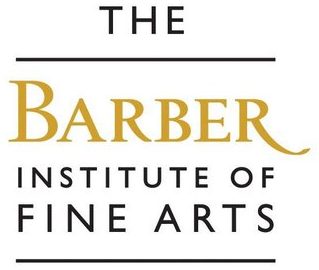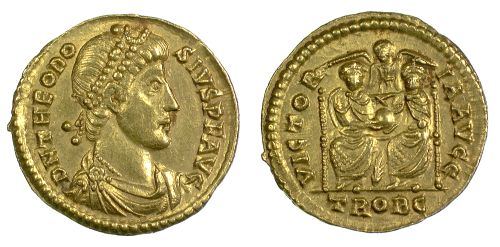Late Roman Coins
Coins from between the end of the house of Constantine – with the death of Julian in 363 – and the reforms of Anastasius I (491-518) are, in the Barber’s collection, considered as a separate and ‘Late Roman’. The century sees the continued shift from the importance of the silver to the gold coinage, the very gradual encroachment of Christian symbols onto the coins and such important historical events as the division of the Empire into Eastern and Western halves, the sack of Rome in 410, and the so-called ‘fall of Rome’ in 476.
As the Empire was divided into two, the coinage didn’t take on too much of an obviously divisive character. There are attempts to show unity between the eastern and western emperors, for example, Valentinian, emperor of the East, and his brother Valens, emperor of the West, are shown enthroned side by side. Even four centuries later, the memory of the Republic continues to play a role on the coins – salus rei publicae (saviour of the republic), restitutor rei publicae (restorer of the republic) and securitas rei publicae (security of the republic) still feature in Late Roman coin inscriptions. Coins also continue to be struck in the names of imperial relatives – sisters, wives, etc.
The base metal coinage declined greatly in size and quality, however, becoming barely distinguishable from stones archaeologically. Impractical for exchange and unusable as vehicles of propaganda, the Eastern Emperor, Anastasius I, reformed the base metal coinage in 498, making it larger, giving it denominations which were marked numerically on the coins, and reintroducing a clear tie to a particular mint for quality control purposes. These reforms are generally said to mark the break between the Roman and Byzantine coinages.
Of the entire Roman Republican to Byzantine coinage run, the Late Roman section is one of the most weakly represented sections in the Barber’s collection, with the coinage of the Western Roman Emperors particularly poorly represented. This is primarily because it falls between the interests of the two main donors, Philip Whitting and Geoffrey Haines. It does, however, have some great examples from the period, particularly of the gold solidus.

